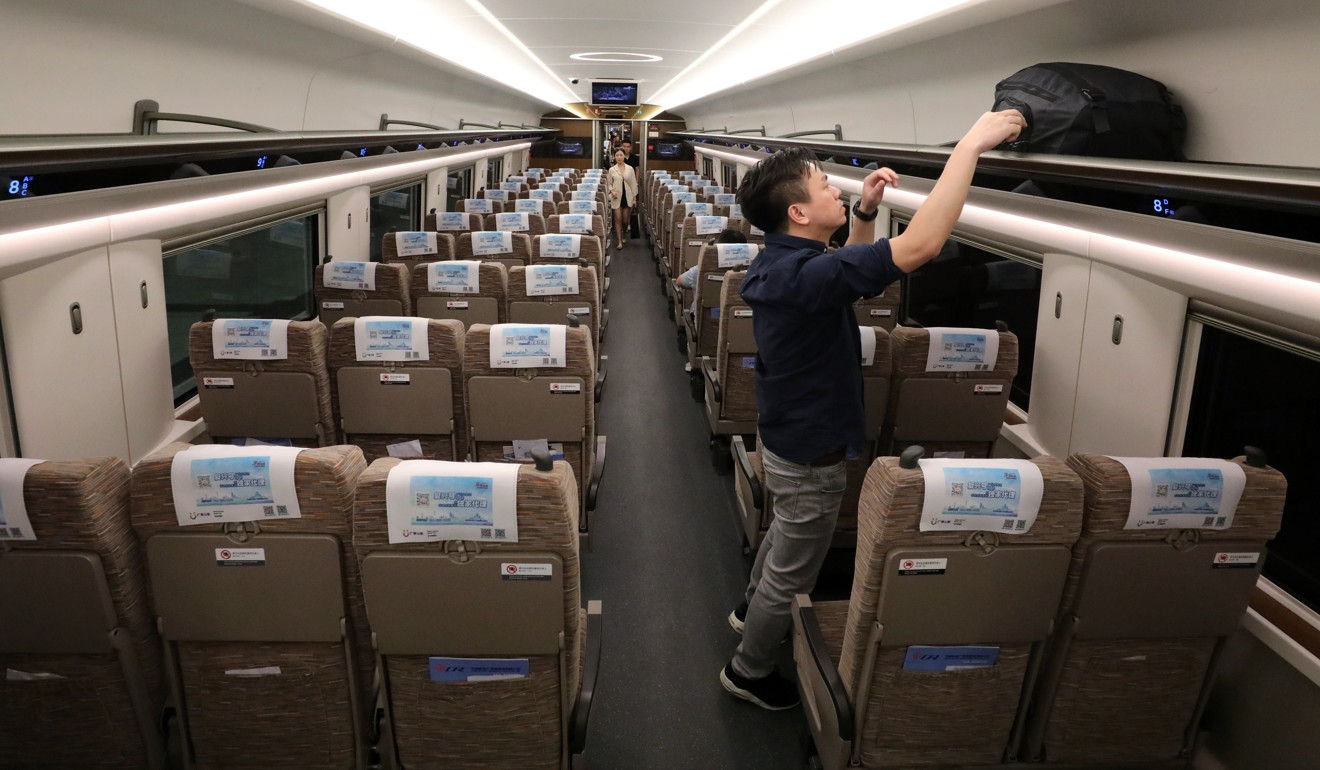
Just 30 per cent of users of high-speed rail to mainland China are Hongkongers, government says
- Transport chief Frank Chan says rail link carried on average 50,921 passengers a day, or 63.5 per cent of projected 80,100 users
Just 30 per cent of passengers using cross-border high-speed trains are Hongkongers, with the service still underused since coming into operation in late September, according to the government.
During the period, the service recorded a total patronage of 1.98 million people, of which 30 per cent were heading out of Hong Kong and the rest inbound. The government said Hongkongers accounted for 30 per cent of the total and the rest were from mainland China and of other nationalities.

The 26km Hong Kong section of the Guangzhou-Shenzhen-Hong Kong Express Rail Link (XRL) terminates at West Kowloon and connects to the country’s 25,000km network. Its opening was delayed by three years and the cost was one-third over budget.
High-speed rail passenger totals at 63 per cent of goal, MTR says
“XRL is a new cross-boundary transport mode for Hong Kong. Passengers will need time to adapt to this new means of travelling,” Frank Chan said. “We cannot make a conclusive forecast on the long-term demand for XRL just on the basis of the patronage and the proportion of Hong Kong passengers for around the first six weeks after the commissioning of the Hong Kong section.”
Tanya Chan doubted that more Hongkongers would take the express rail as key stations across the border were located outside the city centres of Guangzhou and Chaoshan, for example.
“It is hard to see Hongkongers account for half of the passenger numbers,” she said.
She asked if the rail link was already in the red.
The government, which predicted the link would make a HK$671 million profit this year, said “it had never touched the lower limit” of losses under a mechanism which triggered compensation to rail operator the MTR Corporation.
The mechanism was designed to cushion losses and share gains on the project between the rail operator and the government. It stipulated the government-owned Kowloon-Canton Railway Corporation would absorb 70 per cent of any losses incurred or 70 per cent of profits earned when the difference between the projected and actual passenger numbers exceeded 15 per cent.
For commercial reasons, the projected passenger number for the mechanism was never disclosed.
On its best day, October 5, the rail link carried 80,020 passengers – still below the government’s forecast of 80,100 daily users.

